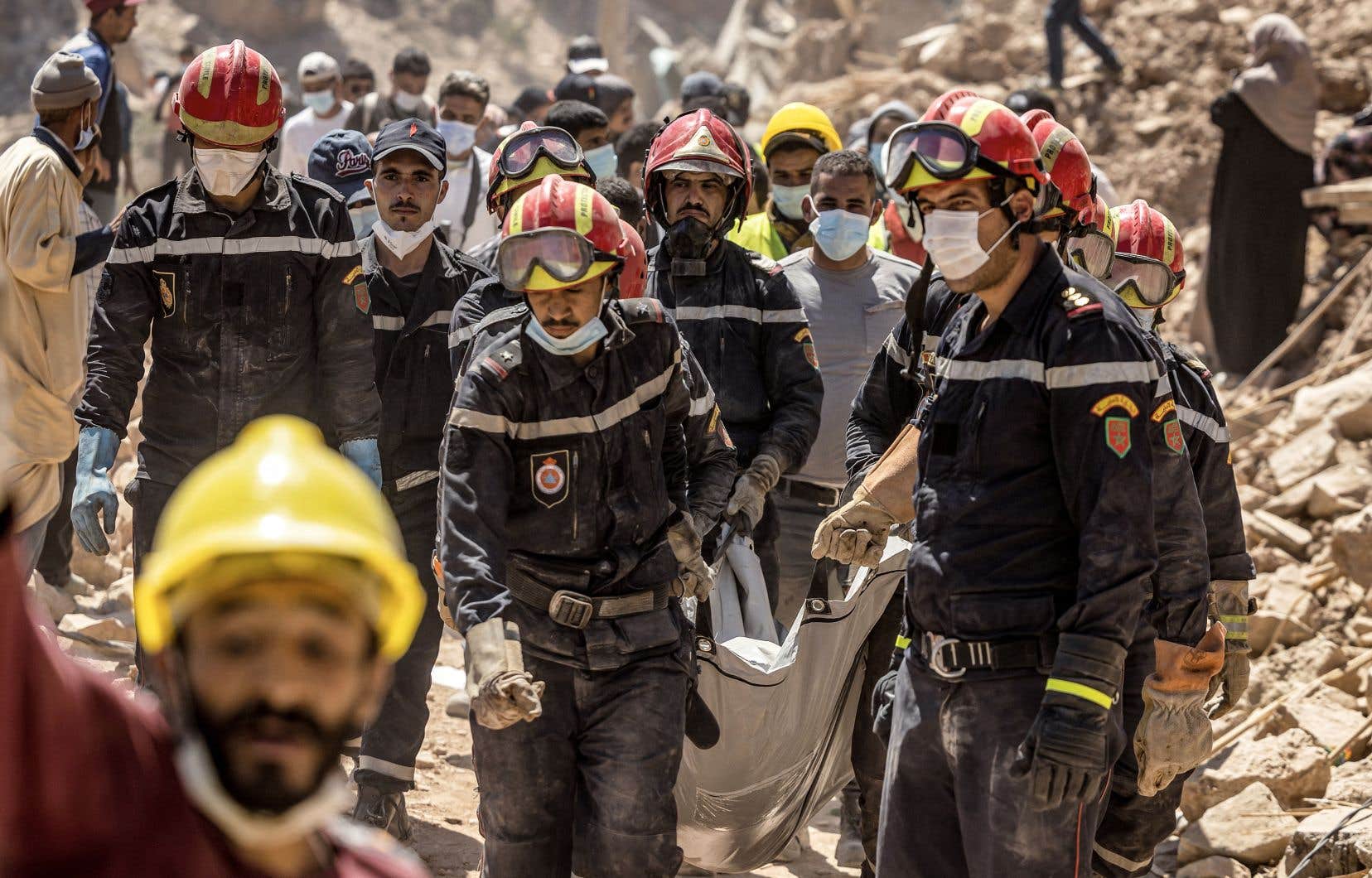Rescuers deployed in Morocco intensified their efforts on Wednesday to help mountain villages devastated by the violent earthquake which left more than 2,900 dead, but hopes of finding survivors are dwindling five days after the disaster.
The earthquake, which struck a region of the High Atlas on Friday evening, southwest of the tourist city of Marrakech (center), also left 5,530 injured, according to a latest official report.
Faced with the scale of the disaster, the Moroccan authorities have asked several foreign countries such as Spain, Great Britain, Qatar and the United Arab Emirates to send search and rescue teams, but the clock is ticking.
The Red Cross, for its part, launched an appeal for funds of around 100 million euros to support relief operations, after having released one million Swiss francs from its Emergency Fund to support the activities of the Crescent -Moroccan red on the field.
The earthquake devastated many homes in villages located in mountainous areas, sometimes very difficult to access, such as that of Ineghede.
In Amizmiz, about an hour southwest of Marrakech, soldiers on Tuesday distributed tents to residents whose homes were destroyed or damaged.
“I just want a home, a dignified place for a human being,” said Fatima Oumalloul, a 59-year-old resident.
Solidarity
On the road leading to Amizmiz, the solidarity of residents is still visible, to see the vans filled with boxes and the roofs loaded with mattresses, or villagers loading aid trucks, according to AFP journalists. Another AFP team also saw private aid convoys heading to remote villages further west.
The tent camps that are beginning to appear near destroyed or heavily damaged homes show that help is coming, but leave survivors uncertain about their fate, with some fearing the arrival of rain.
The head of the Moroccan government, Aziz Akhannouch, assured Monday that citizens who had lost their housing would receive compensation.
The Moroccan army has set up field hospitals to treat the wounded in landlocked areas, such as in the village of Asni, in the disaster-stricken province of Al-Haouz, just over an hour from Marrakech.
Teams from the Ministry of Equipment continued their work on Wednesday to reopen tracks leading to small mountainous villages in this province, a ministry official told AFP. “The road leading to the town of Ighil, the epicenter of the earthquake, and the nearby village of Aghbar, are reopened,” he said in particular.
The earthquake reached magnitude 7, according to the Moroccan Center for Scientific and Technical Research (6.8 according to the American Institute of Geophysics, USGS). It is the most powerful to have ever been measured in Morocco.
It is also the deadliest in the kingdom since the one that destroyed Agadir, on the west coast, on February 29, 1960. From 12,000 to 15,000 people, or a third of the city’s population, died there.
Pope Francis, who visited Morocco in 2019, said on Wednesday that his thoughts were “with the noble Moroccan people”. “Let us pray for Morocco, let us pray for the inhabitants so that the Lord gives them the strength to recover,” he said.
